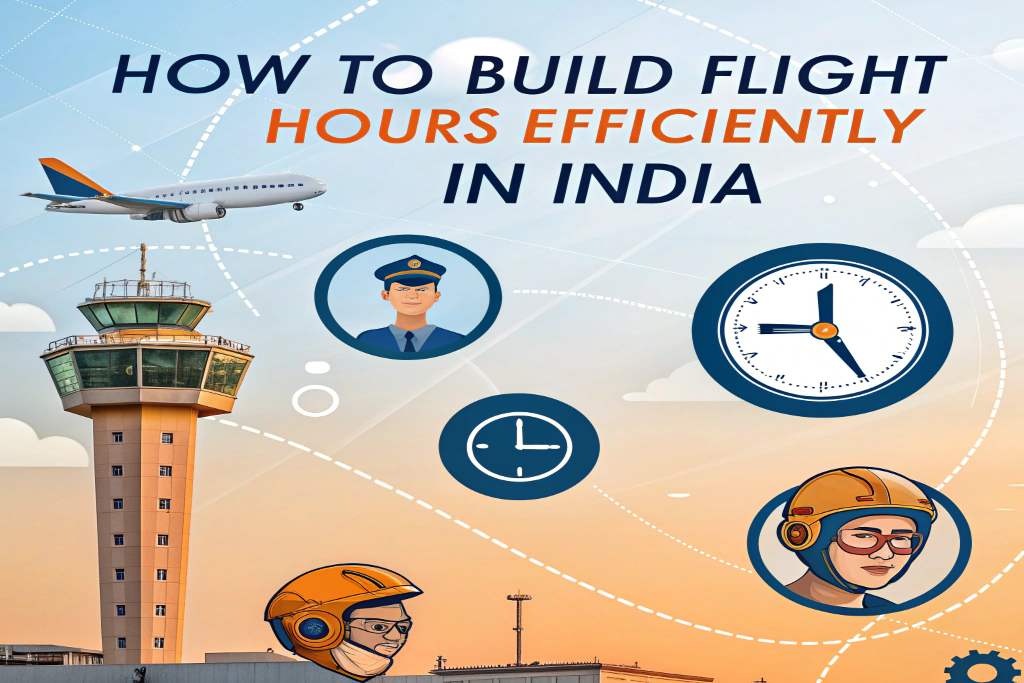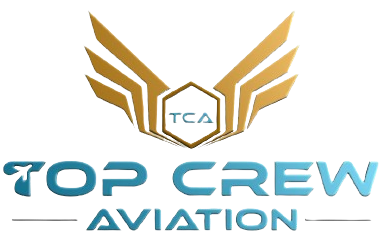
Becoming a commercial pilot in India requires more than just passing exams and getting your licence. One of the biggest requirements set by the DGCA (Directorate General of Civil Aviation) is building flight hours. Many aspiring pilots struggle to complete these hours quickly and cost-effectively.
In this complete guide, we will explain How to Build Flight Hours Efficiently in India, how many you need, different ways to build them, cost-saving tips, and strategies to make the process faster and more efficient — all tailored for Indian aviation conditions.
Understanding Flight Hours
Flight hours are the total number of hours you spend flying an aircraft, recorded in your pilot logbook. The DGCA requires a minimum number of flying hours before you can apply for a Commercial Pilot Licence (CPL) or higher licences like ATPL.
In India, you must log:
- 200 total flying hours for a CPL
- Within these, you need:
- 100 hours as Pilot-in-Command (PIC)
- 50 hours of cross-country flying
- 20 hours instrument flying
- 5 hours of night flying
Why Building Flight Hours Efficiently is Important
Flight training in India is expensive, and building flight hours without planning can waste both time and money. If you have a smart strategy, you can:
- Complete hours faster
- Reduce training costs
- Gain more diverse flying experience.
- Enhance employability by showcasing diverse flight records.
Step-by-Step Guide to Building Flight Hours in India
1. Choose the Right Flying School
Your choice of flying school will affect how quickly and efficiently you can build hours.
Tips for selecting a school:
- Look for DGCA-approved institutes with good aircraft availability
- Check student-to-aircraft ratio (fewer students per aircraft = more flying opportunities)
- Ask about weather patterns in that location (some areas have better flying conditions year-round)
- Confirm the aircraft maintenance record to avoid frequent grounding.
Popular DGCA-approved flying schools in India include:
- Indira Gandhi Institute of Aeronautics (IGIA), Ahmedabad
- Madhya Pradesh Flying Club, Indore
- Bombay Flying Club, Mumbai
- Government Flying Training Institute, Odisha
2. Plan Your Flying Hours in Advance
Instead of flying randomly, plan a flying schedule that ensures steady progress.
- Block booking: Reserve flying slots weeks in advance
- Fly during early morning or late afternoon when winds are calmer.
- Avoid weather delay seasons, such as the heavy monsoon.
3. Focus on Pilot-in-Command (PIC) Hours Early
Since 100 PIC hours are mandatory, start building them as soon as possible.
Why focus early?
- PIC hours are the hardest to build once you finish your basic training
- Flying solo helps you gain confidence and meet requirements faster.
4. Combine Hour Building with Skill Building
Don’t just fly in circles to fill your logbook. Use the time to:
- Practice cross-country routes
- Improve radio communication
- Learn different airfields and navigation techniques.
- Get comfortable with uncontrolled airspace and controlled airports.
5. Fly Cross-Country Routes for More Value
Cross-country flying counts towards both your total hours and cross-country requirements.
In India, common cross-country routes include:
- Mumbai – Pune – Shirdi – Mumbai
- Jaipur – Udaipur – Jodhpur – Jaipur
- Delhi – Agra – Jaipur – Delhi
These flights give you experience in varied terrains and ATC environments.
6. Consider Hour-Building Abroad (If Budget Allows)
Some pilots go to countries like the USA, South Africa, or the Philippines for cheaper and faster hour-building because:
- Better weather conditions = more flying days
- Cheaper fuel and aircraft rentals
- Faster scheduling due to more aircraft availability
However, you must convert hours back to DGCA standards when returning.
7. Use Simulators for Instrument Practice
While simulator time doesn’t always count towards all DGCA requirements, it is extremely helpful for instrument flying and procedure training.
DGCA allows some simulator hours to be credited, especially for instrument training.
8. Share Flying Costs (Safety First)
If allowed by your flying school, consider flying with another trainee and splitting the costs. For example:
- On cross-country trips, one person flies to the destination as PIC, and the other person flies back.
- This reduces the cost per hour while meeting requirements for both pilots.
9. Avoid Long Gaps Between Flights
Flying regularly ensures your skills remain sharp. Long gaps mean you spend extra time re-learning, which wastes hours and money.
Aim for at least 3-4 flights per week during your hour-building phase.
10. Keep a Meticulous Pilot Logbook
Your pilot logbook is your proof of hours. Always:
- Record flights immediately after landing
- Get instructor signatures when required.
- Double-check entries for accuracy
Errors in logbooks can cause DGCA delays in issuing licences.
Cost of Building Flight Hours in India
On average, flight training in India costs ₹8,000 to ₹12,000 per hour for a single-engine aircraft.
Estimated cost for 200 hours CPL requirement: 200 × ₹9,500 (average) = ₹19,00,000
Costs can be reduced by:
- Choosing schools with package deals
- Flying during off-peak seasons for discounts
- Building hours abroad if it’s cheaper
Challenges in Building Flight Hours in India
- Weather Delays – Monsoon and fog can cause cancellations.
- Aircraft Shortage – Some schools have too few aircraft for all students.
- High Costs – Fuel and maintenance costs are rising.
- DGCA Regulations – Strict rules on what hours are counted.
Best Practices for Efficient Flight Hour Building
- Book back-to-back flights to maximise training
- Fly in good weather for consistent logging.
- Do long cross-country trips to cover multiple requirements in one flight.
- Use every opportunity — don’t skip flights unless necessary.
- Review each flight with your instructor for faster learning.
Sample Flight Hour-Building Plan for India
- Month 1–2: Basic training + solo flights (30–40 hours)
- Month 3–4: PIC building + short cross-country flights (40–60 hours)
- Month 5–6: Long cross-country + instrument flying (50–60 hours)
- Month 7–8: Night flying + final PIC hours (40–50 hours)
This plan ensures you meet DGCA requirements in about 8 months without unnecessary delays.
Extra Tips to Save Money While Building Hours
- Fly early in the morning when winds are calmer to avoid cancellations.
- Book aircraft in advance for multiple hours at a time.
- Avoid idle time on the ground — keep flights productive.
- Choose less busy airfields for faster takeoffs and landings.
After Building Flight Hours – Next Steps
Once you’ve completed your required hours:
- Submit your logbook to DGCA for verification.
- Prepare for the CPL skill test with an examiner.
- Complete Radio Telephony (RT) licence if not done already.
- Apply for CPL and start looking for job opportunities like flight instructor, charter pilot, or airline cadet programmes.
Conclusion
Building flight hours efficiently in India is about smart planning, consistent flying, and making the most of every hour in the air. By choosing the right school, booking flights strategically, and combining multiple requirements in one flight, you can save both time and money.
Whether you build your hours in India or partially abroad, remember that every flight is an opportunity to learn, improve, and prepare for your professional flying career.
FAQ’s
- How many flight hours are needed for a CPL in India?
200 hours total, including 100 PIC hours, cross-country, night, and instrument flying. - Cheapest way to build hours in India?
Join a DGCA-approved school, fly off-peak, combine flights, or build hours abroad if cheaper. - Can I build hours abroad for DGCA?
Yes, but hours must meet DGCA rules and be converted in India. - How long to build 200 hours in India?
Around 6–12 months depending on weather and flying frequency. - Do simulator hours count in India?
Only some instrument hours on DGCA-approved simulators count.
Frequently Asked Questions
No FAQs found.



